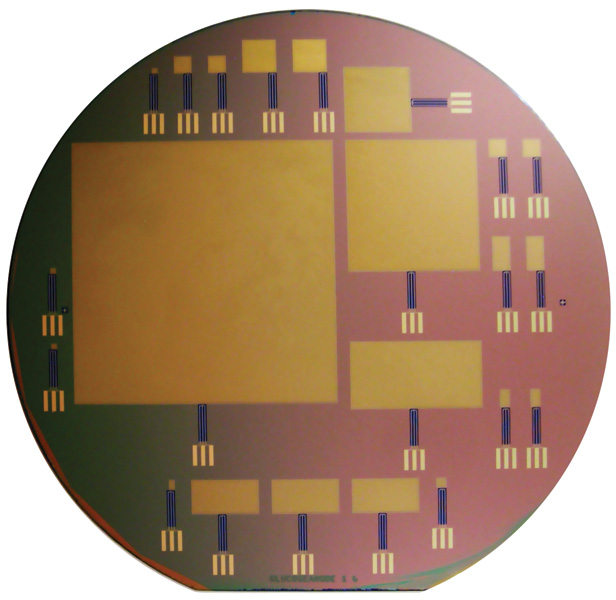Tapping into the Power of Sugar

MIT engineers have developed a fuel cell that runs on the same sugar that powers human cells: glucose. It might someday drive highly efficient brain implants that could help paralyzed patients move their arms and legs again.
The fuel cell strips electrons from glucose molecules to create a small electric current. The researchers, led by Rahul Sarpeshkar, an associate professor of electrical engineering and computer science, fabricated it on a silicon chip, allowing it to be integrated with other circuits that would be needed for a brain implant.
The new cell has no biological components. A platinum catalyst mimics the activity of cellular enzymes that break down glucose to generate ATP, the cell’s energy currency. (Platinum has a proven record of long-term biocompatibility within the body.) So far, the fuel cell can generate up to hundreds of microwatts—enough to power a clinically useful ultralow-power neural implant.
“It will be a few more years into the future before you see people with spinal-cord injuries receive such implantable systems in the context of standard medical care, but those are the sorts of devices you could envision powering from a glucose-based fuel cell,” says Benjamin Rapoport, PhD ’11, a former graduate student in Sarpeshkar’s lab and the first author on a recent PLoS ONE paper describing the fuel cell.
Rapoport calculated that in theory, the glucose fuel cell could get all the sugar it needs from the cerebrospinal fluid (CSF) that bathes the brain and protects it from banging into the skull. There are very few cells in CSF, so it’s highly unlikely that an implant located there would provoke an immune response. CSF also contains significant glucose that the body does not generally use.
Sarpeshkar’s group is a leader in the field of ultralow-power electronics, having pioneered designs for cochlear implants and brain implants. “The glucose fuel cell, when combined with such ultralow-power electronics, can enable brain implants or other implants to be completely self-powered,” says Sarpeshkar.
Although Sarpeshkar has begun working on bringing ultralow-power medical technology to market, he cautions that glucose-powered implantable medical devices are still many years away.
Keep Reading
Most Popular
Large language models can do jaw-dropping things. But nobody knows exactly why.
And that's a problem. Figuring it out is one of the biggest scientific puzzles of our time and a crucial step towards controlling more powerful future models.
How scientists traced a mysterious covid case back to six toilets
When wastewater surveillance turns into a hunt for a single infected individual, the ethics get tricky.
The problem with plug-in hybrids? Their drivers.
Plug-in hybrids are often sold as a transition to EVs, but new data from Europe shows we’re still underestimating the emissions they produce.
Stay connected
Get the latest updates from
MIT Technology Review
Discover special offers, top stories, upcoming events, and more.